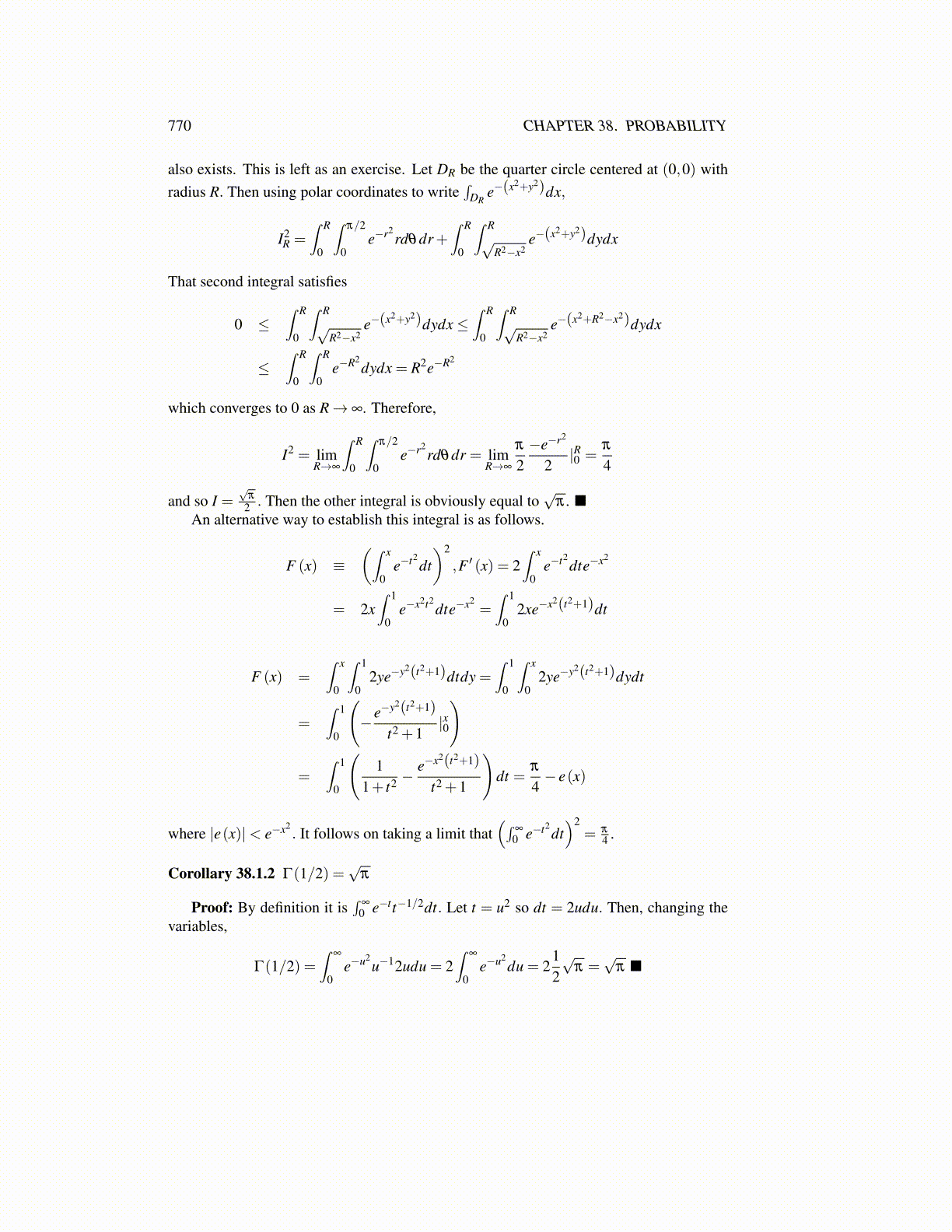
770 CHAPTER 38. PROBABILITY
also exists. This is left as an exercise. Let DR be the quarter circle centered at (0,0) withradius R. Then using polar coordinates to write
∫DR
e−(x2+y2)dx,
I2R =
∫ R
0
∫π/2
0e−r2
rdθdr+∫ R
0
∫ R√
R2−x2e−(x2+y2)dydx
That second integral satisfies
0 ≤∫ R
0
∫ R√
R2−x2e−(x2+y2)dydx≤
∫ R
0
∫ R√
R2−x2e−(x2+R2−x2)dydx
≤∫ R
0
∫ R
0e−R2
dydx = R2e−R2
which converges to 0 as R→ ∞. Therefore,
I2 = limR→∞
∫ R
0
∫π/2
0e−r2
rdθdr = limR→∞
π
2−e−r2
2|R0 =
π
4
and so I =√
π
2 . Then the other integral is obviously equal to√
π . ■An alternative way to establish this integral is as follows.
F (x) ≡(∫ x
0e−t2
dt)2
,F ′ (x) = 2∫ x
0e−t2
dte−x2
= 2x∫ 1
0e−x2t2
dte−x2=∫ 1
02xe−x2(t2+1)dt
F (x) =∫ x
0
∫ 1
02ye−y2(t2+1)dtdy =
∫ 1
0
∫ x
02ye−y2(t2+1)dydt
=∫ 1
0
(−e−y2(t2+1)
t2 +1|x0
)
=∫ 1
0
(1
1+ t2 −e−x2(t2+1)
t2 +1
)dt =
π
4− e(x)
where |e(x)|< e−x2. It follows on taking a limit that
(∫∞
0 e−t2dt)2
= π
4 .
Corollary 38.1.2 Γ(1/2) =√
π
Proof: By definition it is∫
∞
0 e−tt−1/2dt. Let t = u2 so dt = 2udu. Then, changing thevariables,
Γ(1/2) =∫
∞
0e−u2
u−12udu = 2∫
∞
0e−u2
du = 212√
π =√
π ■